Exploding Popularity
Over the last couple of years, the interest in and availability of lab-created diamonds has exploded.
All the major jewelry brands have realized that lab diamonds offer consumers numerous advantages over Earth-mined diamonds. There are now jewelry companies solely dedicated to selling jewelry featuring lab-created diamonds.
For those that may not be converts just yet, or simply need more information, this article will explain why jewelers and consumers alike are interested in and make the choice of lab-created diamonds.
It can be very complicated when trying to figure out the world of diamonds and other colorless and near-colorless stones that on the surface, look like diamonds. Which ones to buy??
What Exactly Is The Proper Name?
What is important to know is that only lab-created, a.k.a., lab-grown, synthetic diamonds, engineered diamonds, cultured diamonds, and of course man-made diamonds are identical to mother nature’s diamonds (vs. Earth-mined, natural diamonds, some use the term "real diamonds")
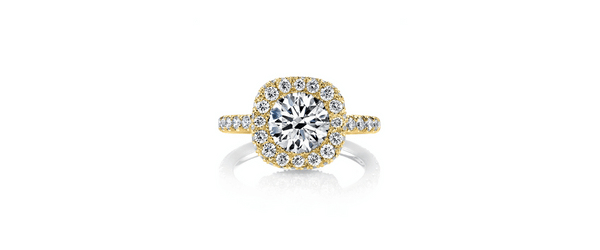
Click HERE to see the entire Jean Dousset lab-created engagement ring collection.
But, no matter what name they go by, they are the only material that has the same optical, physical, and chemical properties as natural, Earth-mined diamonds.
So What Does This All Mean Exactly?
Simply put:
- The conditions in these laboratories duplicate the conditions 100 miles below the surface of the earth where natural diamonds form, under extreme heat and pressure. They offer a mining-free alternative to Earth-mined diamonds.
- Laboratories do this using highly advanced, sophisticated equipment to produce diamonds.
- Lab-created diamonds bend and reflect light in the same way as natural diamonds-creating the same brilliance (white light) fire (spectral colors) and sparkle (silver flashes) as mined diamonds.
- The surface of polished synthetic diamonds has the same adamantine luster; there is nothing else like it in the world of diamond simulants, e.g. cubic zirconia or Moissanite.
- They are also 10 on the Mohs scale of hardness (diamond is the hardest substance known to man.)
- They are chemically identical; pure carbon with the same density and atomic structure.
- They are visually indistinguishable from Earth-mined diamonds.
- Without advanced testing capabilities, it is impossible for jewelers to distinguish between mined or lab-created unless the manufacturer laser engraves the stone with their branding.
- No look-alike stones can boast all these combined attributes. In fact, none of them even come close to possessing all the properties of Earth-mined, or lab-created diamonds.
Why Do Consumers Choose Lab-Grown Diamonds?
There is no question about their origins-they are ethical and “conflict-free.” This means they do not come from countries where diamonds are traded for arms that fuel civil wars or where unethical behaviors such as human rights abuses and child labor occur.
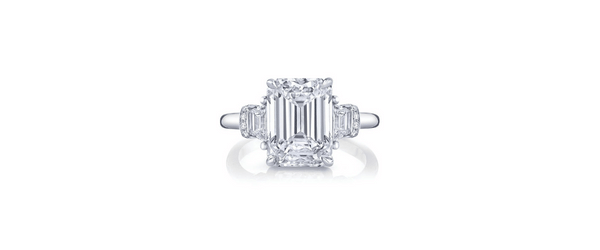
Click HERE to see the entire Jean Dousset lab-created engagement ring collection.
Better For The Environment:
- Lab-created diamonds are better for the environment, as 250 tons of earth must be moved in order to find one commercial quality one-carat diamond.
- This requires massive mining operations that tear up the earth; these mines require enormous amounts of water to operate, and heavy equipment that runs on fossil fuels.
Lab-created diamonds use renewable energy sources in their production with zero emissions.
Certification:
All lab-grown diamonds should be accompanied by a certificate or report that states their origin-the most well-known and reliable documents are those from GIA* or IGI*, among others that certify natural diamonds and now lab-created stones.
Lower Prices:
- And last but certainly not least, they are far less expensive than Earth-mined, natural diamonds, especially for the grades at the top of the color and clarity scales, as well as larger sizes. Consumers can spend far less money without sacrificing quality!
Price Comparisons:
Just to give you an idea of how prices compare, we’ve given you three examples of one-carat round diamonds at the higher end of the color, clarity, and cut grading scales and compared them to similar mined diamonds.
These are just a sampling of where lab-created diamonds can be researched and purchased. This article is meant to get you started, by looking at some of the best and most reputable dealers out there.
Stock availability and price quotes for the following diamonds are from 12.22.2022
Blue Nile Lab-Created Round: 1.01 Color: G, Clarity: VVS2, Cut: Ideal Price: $1728
Blue Nile Earth-Mined Round: 1.00 Color: H, Clarity: VVS1, Cut: Good Price: $5840
NOTES:
The lab-grown diamond is one point larger, the color is one grade higher, the clarity is one grade lower the cut grade is two grades higher. The price difference is $4112 is 70% lower than the Earth-mined diamond. GIA Report.
Click HERE for details.
Brilliant Earth Lab-created Round: 1.02 Color: D Clarity: IF Cut: Ideal Price: $4020
Brilliant Earth-mined Round: 1.01 Color: D Clarity: FL Cut: Ideal Price: $9970
NOTES: The lab-grown diamond is one point larger, the same color grade, one clarity grade lower, same cut grade. The lab-grown diamond comes with an IGI certificate and the mined diamond, a GIA report. The price difference is $5950 is 60% lower than the Earth-mined diamond.
Click HERE for details.
James Allen Lab-Created Round: 1.00 Color: G Clarity: VS1 Cut: Ideal Price: $1400
James Allen Earth-Mined Round: 1.00 Color: G Clarity: VS2 Cut: Very Good Price: $4520
NOTES: Same size, same color, lab-grown is one clarity grade higher, cut grade is higher. Lab-created diamond accompanied by IGI certificate.
Click HERE for details.
Brands That Sell Lab-Created Diamonds Only
Clean Origin Lab Round: 1.03 Color D Clarity: VS1 Cut: Excellent, Price: $1363
NOTES: Clean Origin sells only lab-created diamonds, the closest comparison would be the Brilliant Earth-mined diamond. Both are accompanied by an IGI certificate.
Click HERE for details.
Grown Brilliance Round: 1.05 Color D Clarity: IF Cut: Excellent, Price: $4110
NOTES: Sells only lab-created diamonds. The closest comparison is the Brilliant Earth Lab diamond, The GB diamond is 3 points larger, has the same color and clarity, and is one cut grade higher. It is basically the same price.
Click HERE for details.
Grading Factors:
As with Earth-mined diamonds, counterparts grown in laboratories are graded using the 4Cs: Color, Cut, Clarity, and Carat Weight. Here is a brief overview:
Color:
For diamonds, color is defined as the relative position of a diamond’s body color on a colorless to yellow or brown scale. The majority of brands use the GIA color grading scale called the D-Z scale that ranks diamond body color beginning with ‘D’ for colorless diamonds and moves down the alphabet to ‘Z’ for light yellow or brown.
Lab-created diamonds are usually "J" color or higher and there are far more "D" graded stones than you will ever find if looking at mined diamonds (and at a far lower price.)
"

Clarity:
Clarity is the degree to which a diamond is free from those features that affect the appearance of the stone known as “clarity characteristics.” There are two types of clarity characteristics, inclusions and blemishes.
What is an inclusion?
Inclusions are characteristics that are found inside the stone.
What is a blemish?
Blemishes are characteristics that are found on the surface of the diamond.
Lab-created diamonds are SI clarity or higher.
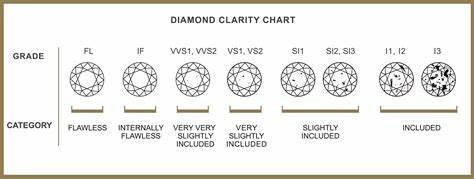
Cut:
Cut is the most important of the 4Cs. It is man's contribution to the beauty of a diamond. Two diamond crystals of the same carat weight may have the same clarity and color but one may not be as beautiful as the other if each is not cut to maximize its beauty.
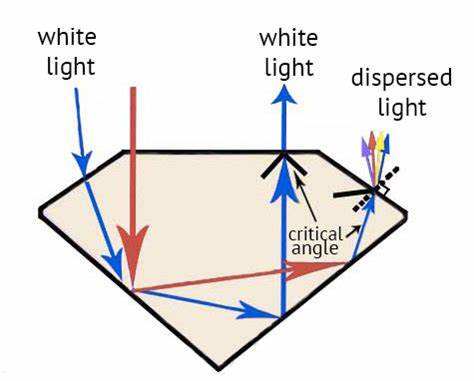
Cut can refer to three things:
1. The overall shape: (e.g.round or cushion) and the facet arrangement; step-cut, brilliant cut or both.
2. The proportions: the angles, depths and the relationship of the parts of a diamond to each other.
3. The finish: which is the symmetry and alignment of the facets and overall polish.
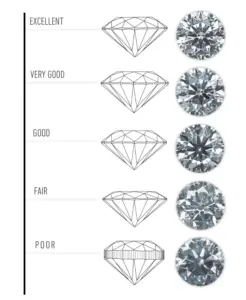
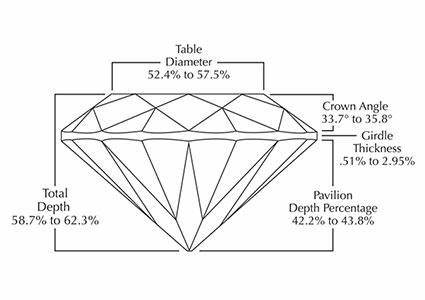
All of these factors are indicated on certificates or reports.
The cut grades of lab created diamonds will always be very good, excellent or ideal.
Carat Weight:
What measurement is used to describe diamonds smaller or larger than one carat?
Points. 100 points equals one carat. Indicated as: 0.51 ct., 1.21 cts. etc. Diamonds are measured using very precise electronic scales, because diamonds are priced by carat weight.
What Is Total Weight?
“Total weight” refers to the combined total carat weight for jewelry with more than one diamond. For example: 20 diamonds in a single piece may be marked 1.23 TW on the price tag.

*For detailed explanations of diamond grading protocols for each lab, click on the links below:
- Gemological Institute of America (GIA)
- Antwerp World Diamond Center (AWDC)
- American Gem Society (AGS)
- International Gemological Institute (IGI)
- Gemological Science International (GSI)
- Gem Certification & Assurance Lab (GCAL)
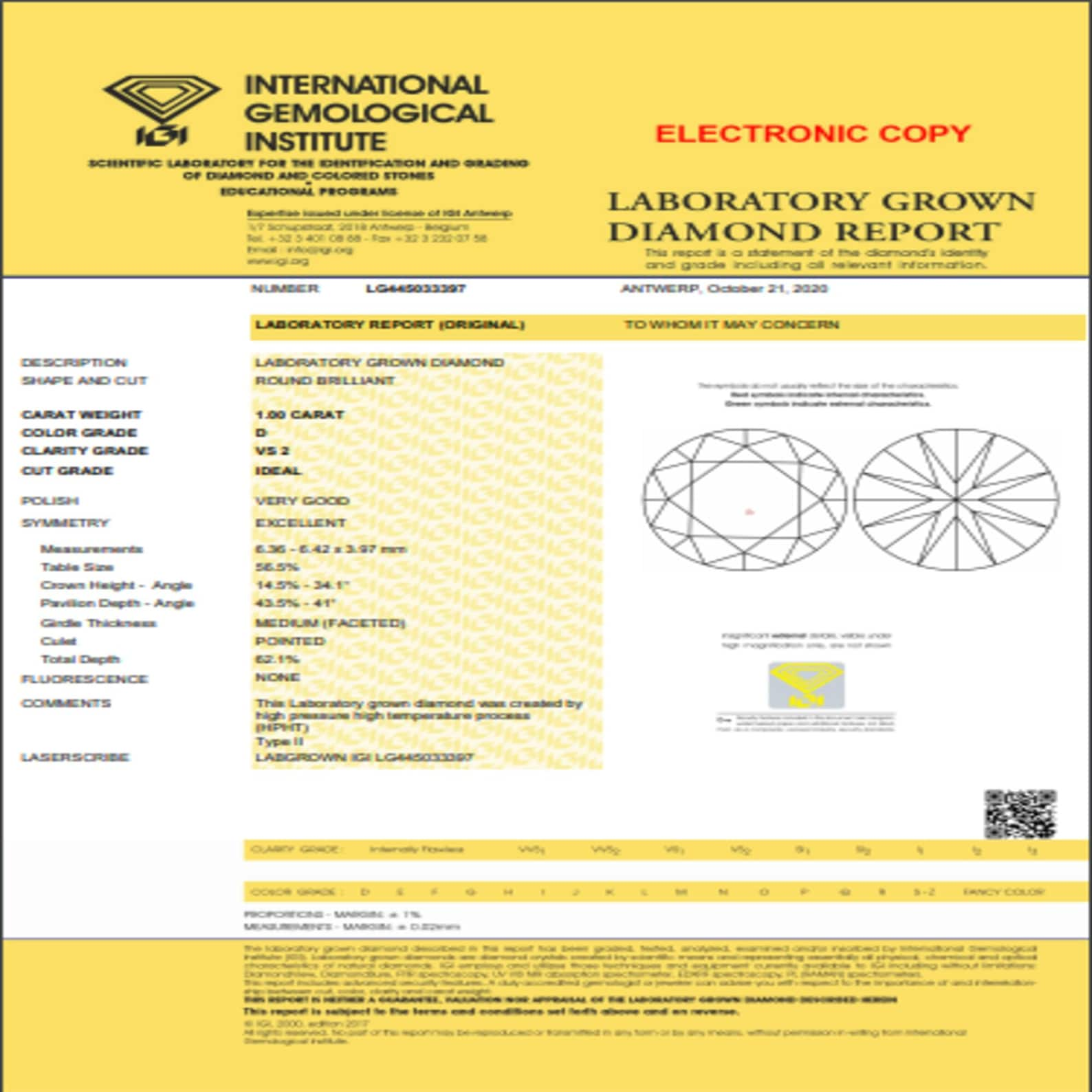
FAQs
What standards are used to grade lab-created diamonds?
The same standards used to grade natural diamond are used to grade lab-created diamonds. The links above provide examples of each lab’s measurement and grading processes for Color, Clarity, Cut, and Carat weight.
The gold standard used to certify mined stones are those set by the GIA. These are the same standards that they, and other labs use for lab-grown diamonds today - (See grading factors above.)

Do Laboratories that create diamonds follow the Kimberley Process?
No, the Kimberley Process was put into place to trace diamonds from their sources, through the supply chain to the end consumer. These measures safeguard against conflict diamonds entering the diamond pipeline at any point along the way.
This is not required for lab diamonds-however, lab-grown diamonds much be accompanied by documentation stating that the origin was a laboratory.
Do lab-created diamonds come in different colors?
The exciting news is yes! Natural fancy color diamonds: yellow, pink, blue and other colors are far more rare than diamonds in the colorless range in nature. For this reason they are difficult to find, and price prohibitive for the vast majority of customers. Fancy yellow is the exception, but large vividly colored yellow stones are also relatively rare.
Fancy Color Diamonds
The process of growing fancy color diamonds in laboratories is actually easier than producing colorless stones. And unlike mined diamonds they can be produced at will which accounts for the shockingly lower price points. The resulting gems exhibit the beautiful light display diamond is known for, combined with the stunning hues found in colored gemstones, what could be better?
Check out the websites mentioned above to find your favorite color!
Does a Lab Created Diamond Test As Natural?
If you are referencing standard diamond testers used in retail stores and by jewelers, then the answer is yes. This type of tool measures the thermal conductivity of the stone being tested; and because "real diamonds" from mines and Lab-Created diamonds have the same physical properties, they conduct heat exactly the same way. Most diamond simulants, other than Moissanite do not. Moissanite is doubly refractive, which means double reflections along facet edges (never seen in diamond.)
More sophisticated tests can be conducted in labs using cutting edge technology to identify natural and lab diamonds.
How Are Lab-Created Diamonds Made?
There are two methods to create diamonds, High-Pressure High-Temperature (HPHT) and Chemical Vapor Deposition. (CVD.) Basically the same environmental conditions found deep within the Earth are reproduced in labs starting with a diamond seed as a template for diamond crystals to form. Click HERE for additional information.
Will My Lab-Created Diamond Change Color Or Become Cloudy Over Time?
No, just as Earth-mined diamonds do not change color or become cloudy over time, the color and clarity of your lab-created stone will remain the same and as beautiful as the day it was purchased.
Are The Only Places To Buy Lab-Created Diamonds Diamond Manufacturers?
No, today there are many mainstream jewelers that sell lab-created diamonds: Zales, Kay Jewelers, Helzberg Diamonds, James Allen, Borsheims and of course Amazon.com. (See examples below.)
Most feature lab diamonds in engagement jewelry, stud earrings and other diamond jewelry. All provide documentation confirming that the stones are lab-grown.
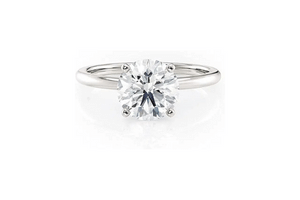
Click HERE for details
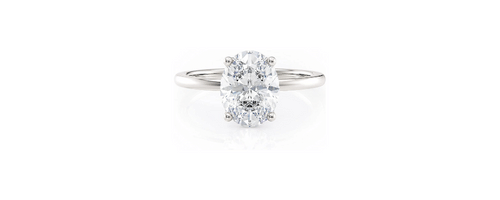
Click HERE for details
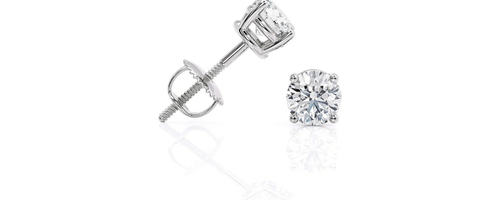
Click HERE for details.
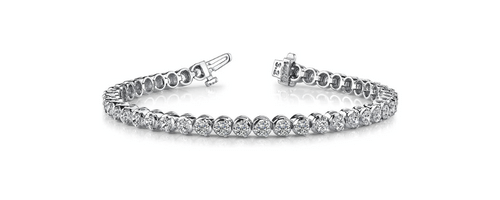
Click HERE for details
Thank you for reading our summary of lab-created diamonds and we welcome your comments and questions!
Related diamond articles:
Why You Should Consider Buying Lab-Created Diamonds
Buying Guide to Engagement Rings
e-Course: Sell More Engagement Rings
Is It A Real Diamond, Or Something Else?
Happy Shopping! Francesca de Granville, G.G., F.G.A.

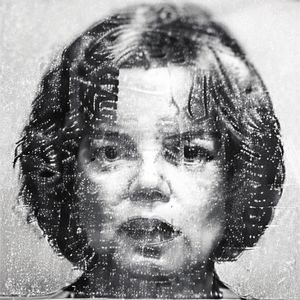
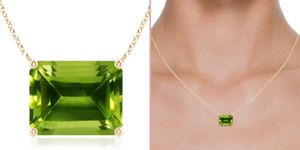
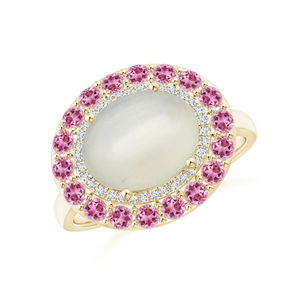
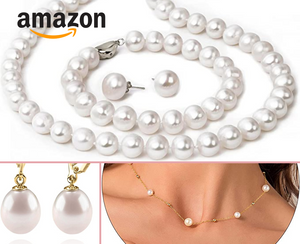
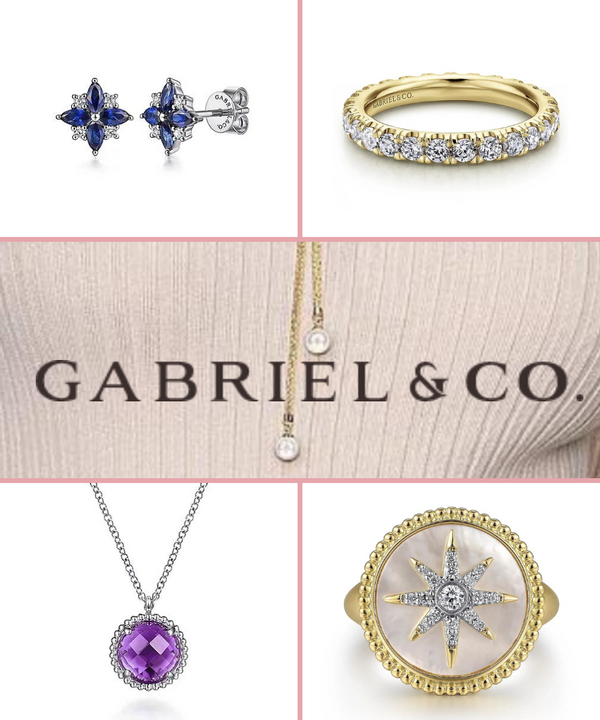
Member discussion